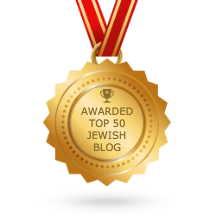AARON’S LIGHT – B’haalot’kha – Num. 8-12 – by Rabbi Baruch Cohon
Of all the Mitzvot – the commandments, duties, responsibilities – that Aaron had to fulfill as High Priest, the one that opens this reading is easily the most symbolic. Possibly also the most significant. Distinguishing its value in the very first line of this section, is the word that gives its name to the entire portion: B’haalot’kha – literally, “when you lift.”
What did Aaron lift? He lifted a 7-branch candlestick, known as the Menorah. In constant use ever since Aaron’s time, it now graces synagogues the world over, and its figure appears on documents and treasured jewelry, on buildings, products and stationery.
It also appears on an arch in Rome to symbolize Israel’s defeat. Capturing the Menorah made the Romans believe they had indeed ended the Jewish nation. How wrong they were.
What is so special about this candlestick? One distinction is the way it is made. This was not put together piece by piece, a base, then attach a shaft and six branches. This, we learned in the text of the Book of Exodus, elaborated by the Talmud and the commentators, was formed from one block of gold. “Of beaten work shall the candlestick be made. Its base, its shaft, its cups, its knobs and its flowers shall be part of it.” One block of gold, beaten into shape. Three branches extended on each side, and one in the center. And the cups were shaped so as to project the light forward, not just straight up. The Menorah should spread Divine light to the world.
Of course Aaron had to light those flames, but that was only part of the Mitzvah. The message he gets here does not say “when you kindle the flames,” it says “when you lift the flames.”
The 7 burning cups of the Menorah are shaped so that the flame does not burn just straight up, but also outward. Spread the light. Yes, it is for G-d, and it is also for people. All people.
Our commentators note details about the cups on the Menorah that add to the visual engineering. Of the three cups on the east side, says Rashi, the two outer ones are angled just slightly so they all shine toward whoever is directly facing the middle light; and the same way on the west side. The innermost of the three on each side, and the center light, (number 4 if you count from either end) are not angled at all, but shine up and straight out.
From the various laws, observances and travel experiences we will read in these 5 chapters, and from the centuries of history that followed, we can learn something of the value of the light Aaron kindled, and raised. Our Menorah indeed shines upward toward Heaven, and forward on all who face it.
Did it shine on the group of tribesmen who missed the first Passover, and convinced Moses to get them the opportunity to celebrate their freedom a month later? Of course it did.
Did it shine on Miriam when she spoke against her sister-in-law? Maybe it did, and maybe she wasn’t facing it. She got punished, and she atoned. In effect, she turned around and accepted the light.
Our candlestick represents the light of Torah. Like the Menorah of Aaron the High Priest, that light shines both upward and outward. When we accept it, it can light up our lives.



